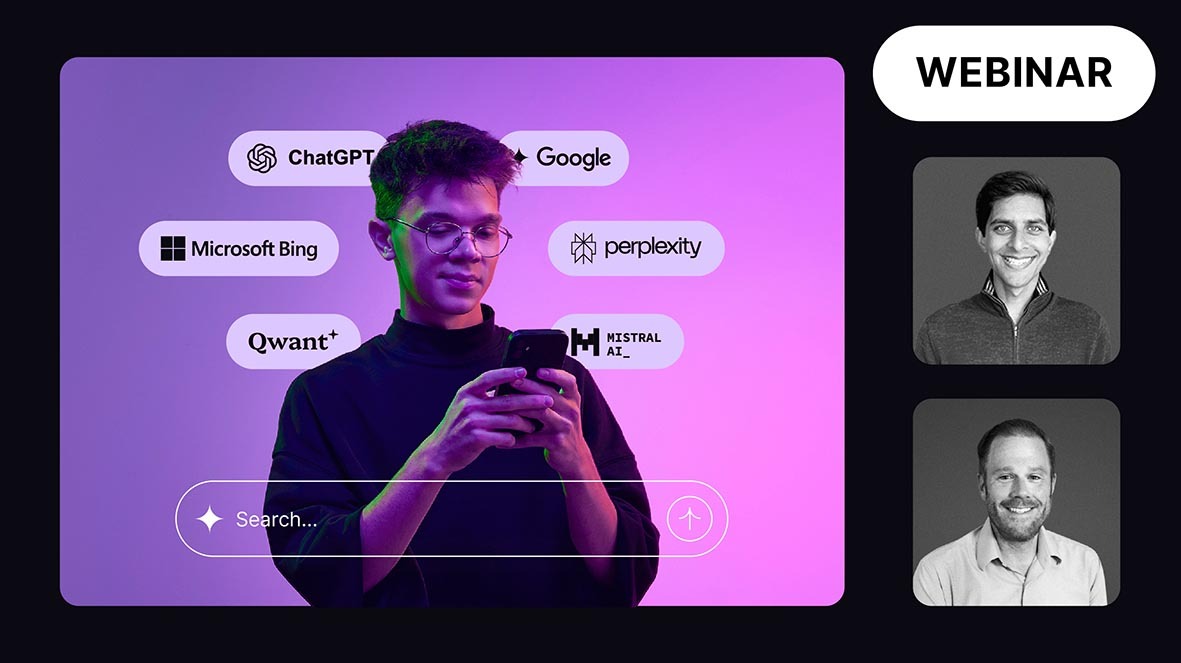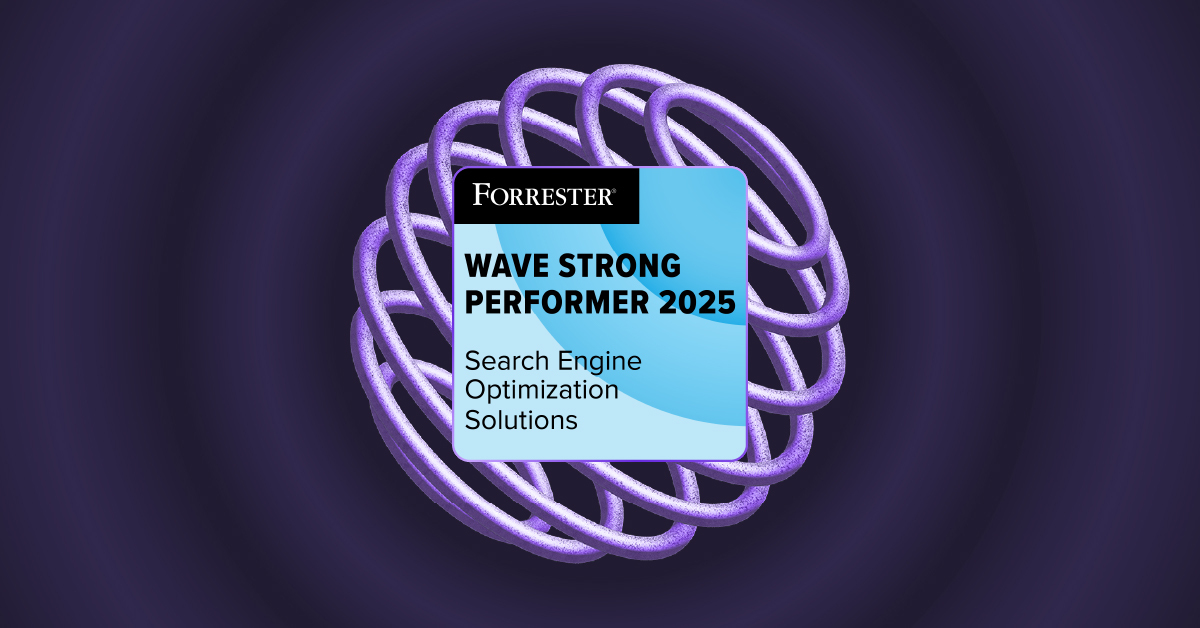Back to learn seo
What Are AI Crawler Bots?

As AI-powered platforms like ChatGPT, Microsoft Copilot, and Perplexity AI rise in popularity with consumers, a new kind of web crawler bot has appeared: AI crawlers.
What are AI crawler bots?
AI crawler bots gather data from websites to train large language models (LLMs), helping them generate more accurate, human-like responses. While they find and crawl websites similarly to search engine crawlers, these user agents have a different purpose that can impact how a brand wants to manage them.
There are two main ways AI crawlers behave on a website that can affect how that site is provided in generative search results:
1. AI crawlers that train models on website content
Unlike traditional search crawlers, AI crawlers focus on collecting data for LLM training. As per Cloudflare’s list of verified bots, some of the most active and verified AI crawlers include:
- GoogleOther (Google)
- Amazonbot (Amazon)
- GPTBot (OpenAI)
- PetalBot (Huawei)
For brands looking to optimize for AI-powered platforms, it’s not enough for content to be searchable — it also needs to be contextually useful for training models. AI platforms may later use this content to generate summaries, answers, or responses based on your material.
Every brand will have a different perspective on whether or not they want AI models trained on their site content. That will depend largely on brand goals and the risk and reward involved in providing information directly to a consumer, without giving them a reason to visit a website. However, the most important thing to consider is that these AI models are limited to the knowledge set that trained them. If a brand blocks all AI crawlers from accessing their site, those crawlers will learn about the brand from other sources — third-party websites and reviews, competitors, and more. The only way to maintain control of your brand narrative in AI search is to contribute to a model’s knowledge of your brand.
2. AI crawlers for live retrieval and citation of search results
Some AI platforms also use crawlers to supplement their pre-trained models with real-time data, a process called live retrieval. This method pulls the latest information from websites and incorporates it into responses, ensuring answers stay relevant and current such as up-to-date pricing, reviews and stock availability
These AI crawlers are not training models with the information they encounter on a website. Instead, they take a consumer’s query on an AI platform, apply it to the database they use as a reference (often the Bing index sometimes in addition to their own Index), analyze the top-ranking results, and generate an answer incorporating what they’ve found (usually including a linked citation.)
To take advantage of organic website traffic from AI platforms, brands must have a plan for AI crawlers and live retrieval. If AI crawlers are blocked at scale without nuance, you could be missing out on consumers searching for your products or services on non-Google platforms.
Do the same AI crawlers handle both training and live retrieval?
It’s unclear whether all AI crawlers perform both training and live retrieval. For instance, OpenAI distinguishes between its crawlers: GPTBot gathers data for training, while ChatGPT-User retrieves live data. Transparency about how other platforms — like Perplexity AI and Google — use crawlers for retrieval may improve over time.
Managing AI crawler access
To effectively manage AI crawlers on your site, it’s essential to decide whether and how you want your content accessed. Again, this will depend on your brand goals, plus the risks and rewards associated with appearing in AI-generated search results. Certain verticals, like e-commerce, may benefit from allowing all the top AI bots to access their website content, ensuring that they both contribute to their brand narrative within the model itself and have fresh, important content appear to consumers via live retrieval. Publishers may need a more nuanced strategy to protect their website content from being summarized in AI search, which could affect organic traffic and website engagement.
Here are some strategies for understanding and managing AI bot behavior on your website:
- Use log file analysis to understand how AI bots are exploring your website. Log data is highly reliable and can provide vital information on how AI bots are finding your content, how much of it they’re finding, where they’re getting “stuck,” and more. Botify’s LogAnalyzer provides automated insights into your log file data.
- Develop a nuanced bot governance plan. The newness of AI-powered search has created many unknowns, and some brands have chosen to block all AI bots from accessing their website as a rule. While this may be the right choice for some, it can also lead to unintended consequences, such as blocking content from appearing in generative responses across platforms. Understanding which bots you’re blocking, why, and what the implications are of doing so is very important as search continues to advance.
- Push your freshest and most important content to the top indexes. Sitemaps, alerting protocols like IndexNow, and pushing your content directly to Bing are all ways you can proactively alert search engine indexes that you have new content in need of crawling. This can encourage AI bots to focus on your priority content and make the most of their crawl budget, whether they’re training a model or referencing URLs for live retrieval.
AI bots for creating a search index
If you’re examining your log data, you might notice visits from AI bots that are neither used for model training nor live retrieval. While it’s a less common use for bots, some are actively building their own search indexes — rival databases to Google and Bing — that could eventually inform the content they use in generative responses.
Creating and maintaining a search index requires significant resources, so it’s not likely that many bots you encounter will be used for this purpose. We know a few specific user agents devoted to this practice:
- OAI-SearchBot: OpenAI’s crawler, used for search “to link and surface websites in search results” in their new search engine ChatGPT Search.
- PerplexityBot: Perplexity’s crawler, designed to help the platform build and maintain its own index, minimizing its dependence on third-party search engines.
These efforts signal a move toward greater autonomy, as these platforms aim to deliver more precise and self-sufficient search capabilities.
List of top AI bot user agents and their purpose
If you see that bots are accessing your website content, you may want to know why — and whether you should allow them access or not. Tracking down every user agent and learning its purpose can take time, so we’ve built a cheat sheet for you:
- ChatGPT-User: Used by OpenAI for live retrieval, providing fresh content and linked citations in response to consumer queries.
- OAI-SearchBot: Used by OpenAI to build and maintain the proprietary search index supporting SearchGPT.
- GPTbot: Used by OpenAI to train and refine generative AI models.
Other AI bots:
- Bytespider: Operated by ByteDance, the parent company of TikTok, this user agent often ignores robots.txt and can make a high volume of site requests compared to other bots. Likely intended to train an LLM for use in TikTok’s search function.
- ClaudeBot: Anthropic’s current general purpose web crawler used to train its AI model.
- Claude-Web: Anthropic’s legacy web crawler used to train its AI model, now retired.
- Anthropic-ai: Anthropic’s legacy web crawler used to train its AI model, now retired.
- CCBot: Non-profit organization CommonCrawl’s user agent devoted to cataloging the Internet to provide open-source web data to the public.
- PerplexityBot: Perplexity’s web crawler used to index websites for its AI-driven search engine, likely to provide better accuracy and relevancy in its results.
- Amazonbot: Amazon’s web crawler used to improve services like its Alexa virtual assistant. This user agent respects robots.txt and is likely used to train Amazon’s LLM on public website content to enrich its knowledge and voice interactions.
- FacebookBot: Facebook crawlers used to improve their language models for their speech recognition technology.
Further reading:
- What Is AI-Powered Search, LLMs, and Live Retrieval?
- Understanding Web Crawlers: Strategies for Traditional and AI Search Bots
- What Are Google AI Overviews and How Do They Work?
- Mapping the Expanded Search Landscape
- Welcome to the Search Revolution: Getting Your Brand Found in ChatGPT Search and AI Assistants
.svg)




.svg)

_Webinar_Banner%201%20(1).png)
.svg)
.svg)

